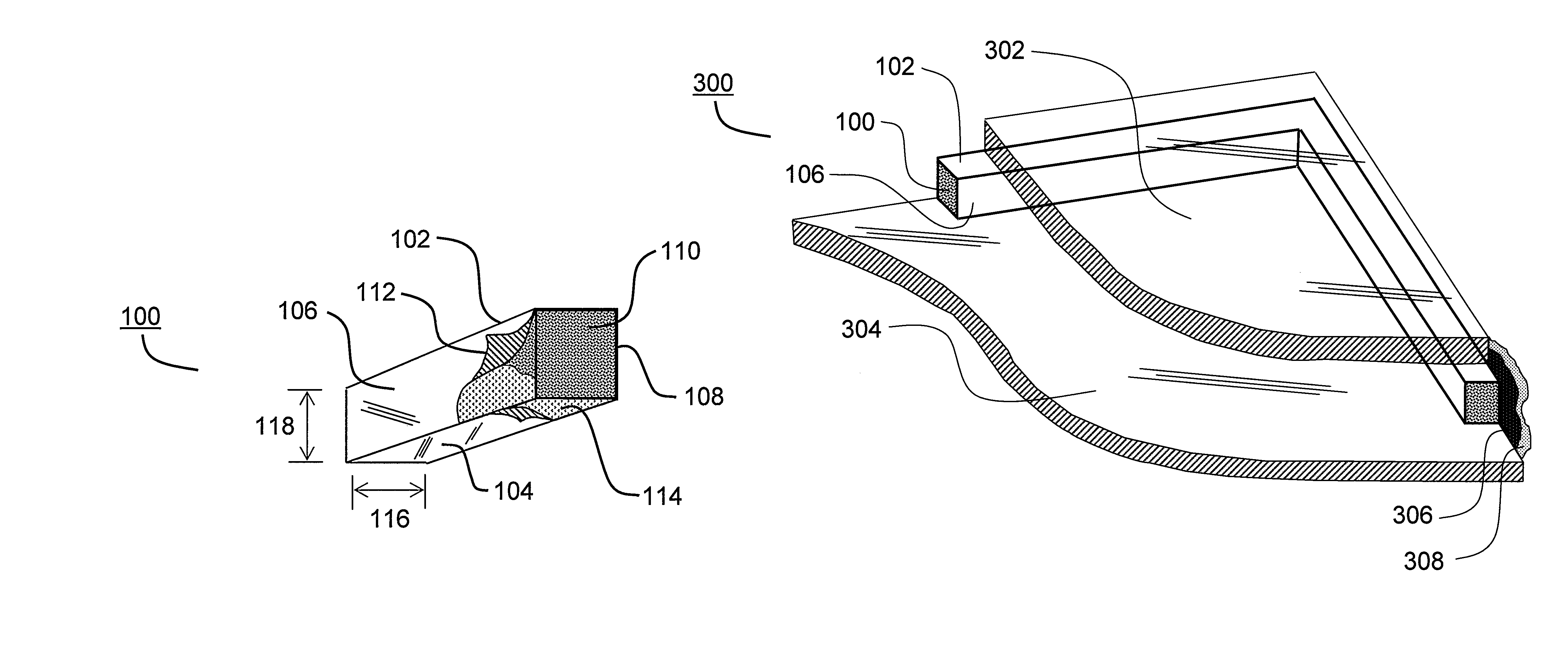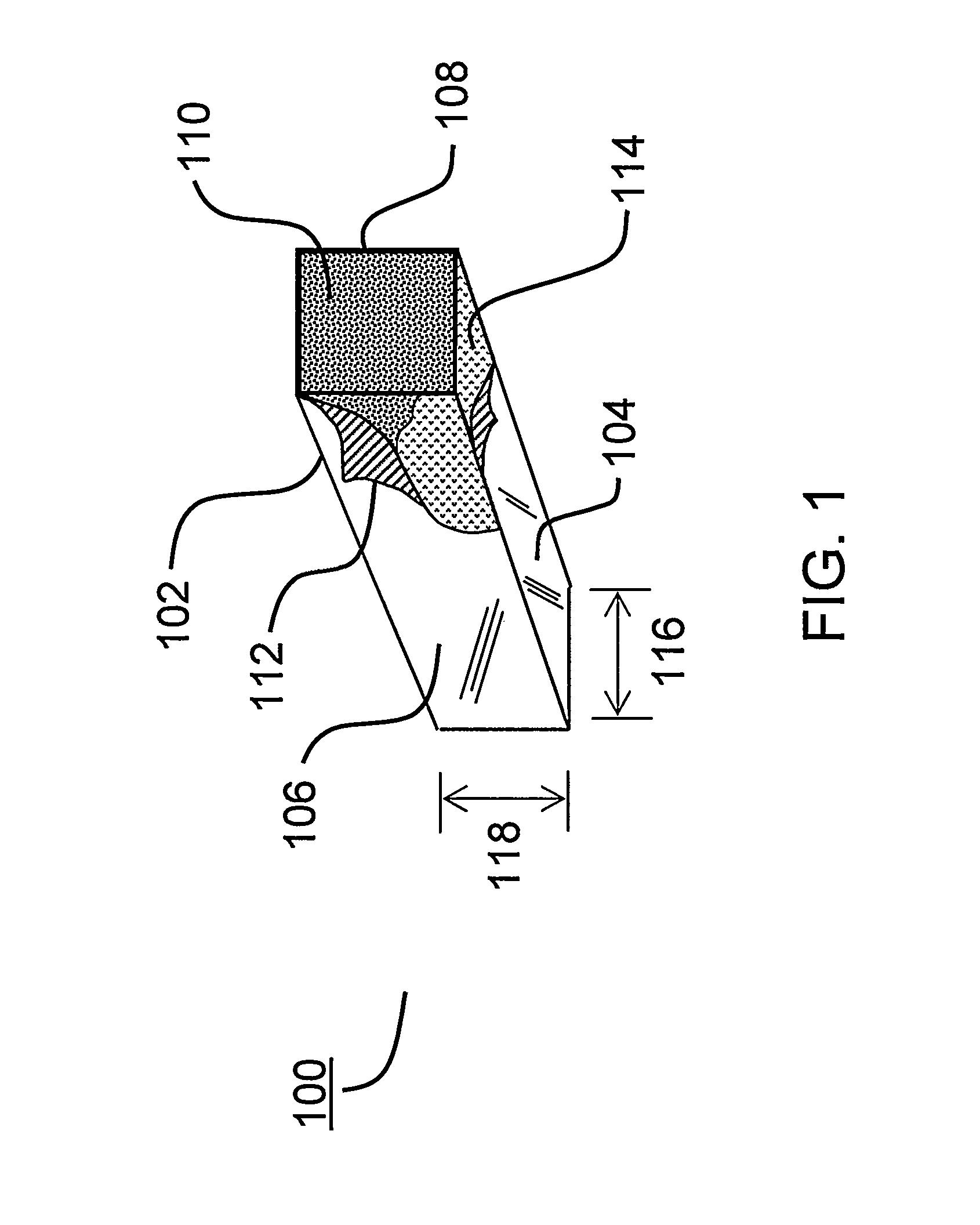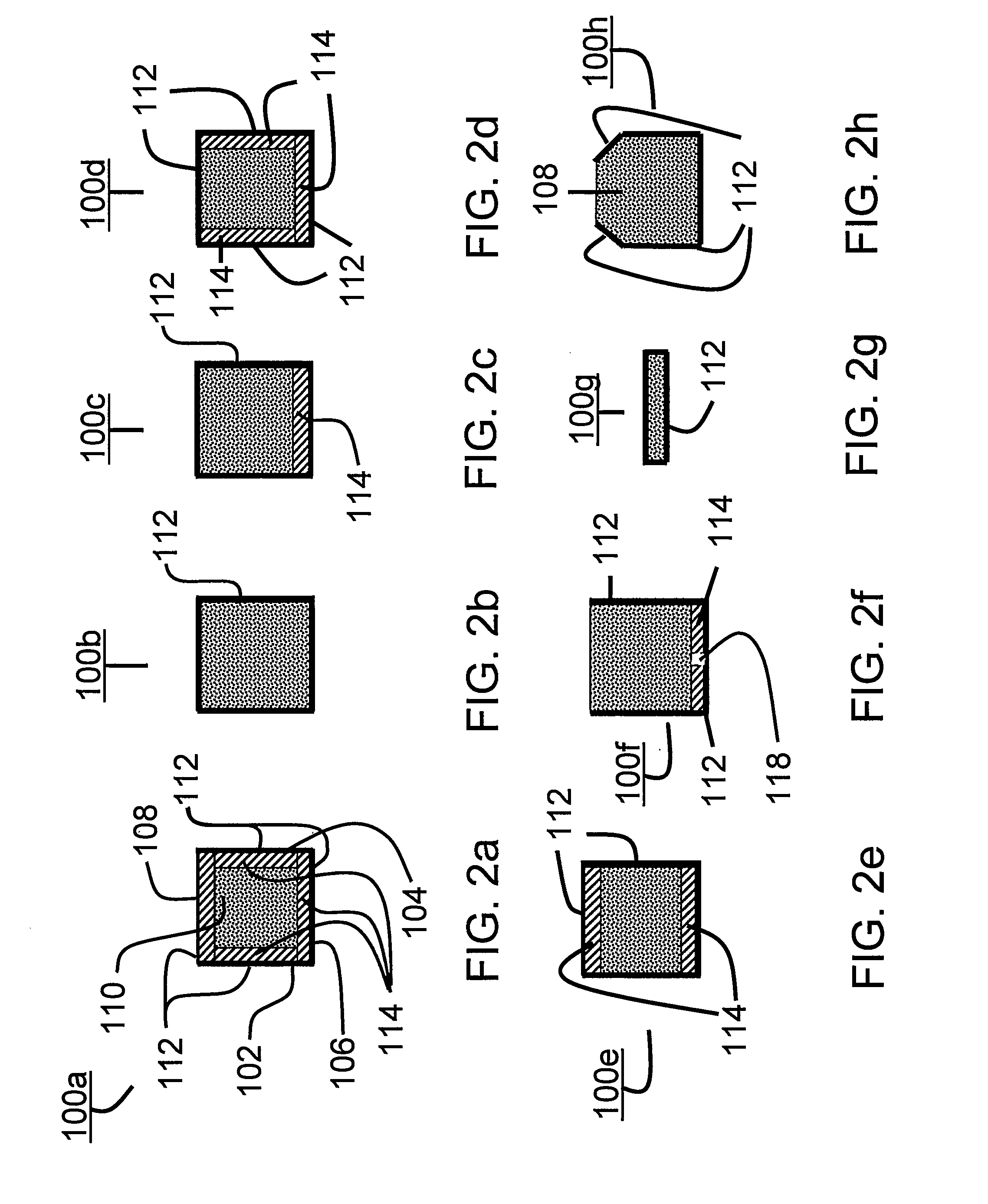Encapsulated composit fibrous aerogel spacer assembly
a technology of aerogel and composit fibrous, which is applied in the direction of floors, building components, construction, etc., can solve the problems of insufficient thermal conductivity of metal, increased cost of steel, and increased heat loss through glass surfaces and glazed building envelopes
- Summary
- Abstract
- Description
- Claims
- Application Information
AI Technical Summary
Benefits of technology
Problems solved by technology
Method used
Image
Examples
case 1
[0051]Case 1 corresponds to prior art, using the 6 mm steel tube spacers mentioned above. Case 2 corresponds to the embodiment of case 1, except with spacer 2 being replaced by the spacer embodied in FIG. 2e, where the stiffening material is steel. This particular embodiment of the spacer 608 is referred to as “aerogel w / steel” in Table I and Table II. Case 3 corresponds to the embodiment of case 1, except with spacer 2 being replaced by the spacer embodied in FIG. 2b. This particular embodiment of the spacer 608 is referred to as “aerogel solid” in Table I and Table II. Case 4 corresponds to the embodiment of case 1, except with spacer 1, spacer 2 and spacer 3 being replaced by spacers in the embodiment of FIG. 2e referred to as “aerogel w / steel”. Case 5 corresponds to the embodiment of case 1, except with spacer 1, spacer 2, and spacer 3 being replaced by spacers in the embodiment of FIG. 2b referred to as “aerogel solid”. The results in terms of the U-factors and the R-values are...
case 6
[0053]Case 6 corresponds to prior art, using the 6 mm steel tube spacers mentioned above. Case 7 corresponds to the embodiment of case 6, except with spacer 2 being replaced by the spacer in the embodiment of FIG. 2e referred to as “aerogel w / steel”. Case 8 corresponds to the embodiment of case 1, except with spacer 2 being replaced by the spacer in the embodiment of FIG. 2b referred to as “aerogel solid”. Case 9 corresponds to the embodiment of Case 1, except with spacer 1, and spacer 2 being replaced by spacers in the embodiment of FIG. 2e referred to as “aerogel w / steel”. Case 10 corresponds to the embodiment of Case 1, except with spacer 1, and spacer 2 being replaced by spacers in the embodiment of FIG. 2b referred to as “aerogel solid”. The results in terms of the U-factors and the R-values are listed in columns 5 and 6 of Table II, respectively. The gradual improvement in the thermal performance of the structure is clearly seen, as the prior art steel spacers are replaced, on...
PUM
 Login to View More
Login to View More Abstract
Description
Claims
Application Information
 Login to View More
Login to View More - R&D
- Intellectual Property
- Life Sciences
- Materials
- Tech Scout
- Unparalleled Data Quality
- Higher Quality Content
- 60% Fewer Hallucinations
Browse by: Latest US Patents, China's latest patents, Technical Efficacy Thesaurus, Application Domain, Technology Topic, Popular Technical Reports.
© 2025 PatSnap. All rights reserved.Legal|Privacy policy|Modern Slavery Act Transparency Statement|Sitemap|About US| Contact US: help@patsnap.com



